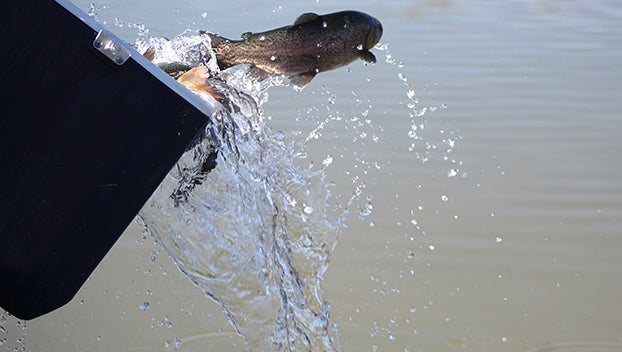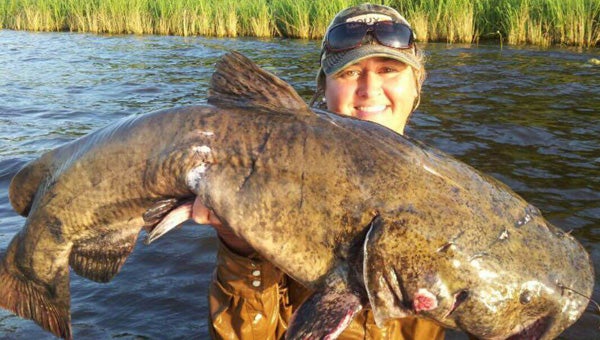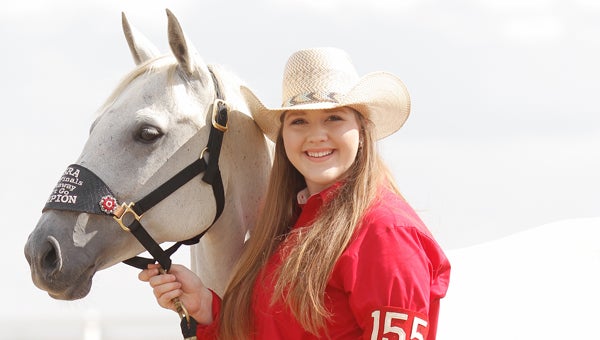Invasion of Bighead and Silver carp
Published 12:01 am Sunday, October 6, 2013
This cold front bearing down on us is like a turnover with 2 minutes left in the football game — a game changer. I am speaking of this cold front that should be passing over us now, or maybe later this evening.
The water world is about to change. This summer to fall major transition is second only to the winter to spring transition.
When August finally drifted past, we thought for sure September would cast off and give us some relief from the oppressive heat and humidity which in turn would spur more fish activity. That did not happen. Actually, the surface water temperature of the area lakes and Old Rivers peaked out in early to mid-September instead of cooling down with surface water temperature reaching 95.4 degrees in some areas I’ve checked.
That was brutal to say the least. I am so glad summer is unofficially and officially over. Of course we will still have those days when the air temperature will climb to 90 degrees, but the nights will grow longer and cooler as the days get shorter.
The humidity will not be so bad and we usually have a lot of wind in October. Wind makes fish bite. We went from a high water temp of 95-plus degrees in late September to 82-85 degrees when a weak cool front passed during the last week of September.
That felt great and was just a sign of good things to come in the fishing scene. The one thing that hurt us this year was the lack of success on the Old Rivers, the live oxbows.
Normally when the landlocked lakes like Concordia, St. John and Lake Bruin’s pleasure boat traffic kicks off, we just fish the Old Rivers, the live oxbows still connected to the Mississippi River. We did that and the Old Rivers produced when the Mississippi River stage was between about 34 to 40 feet.
Once the level dropped below 34 feet, something we did not expect knocked the fishing off — the invasion of the Silver and Bighead carp. If you have followed my columns for the past few weeks, you already know these are non-native invasive species of carp that come from Asia and were accidently released in our river systems in the mid to late 1980s.
What I did not know is these nasty bottom feeding fish eat the same thing shad and crawfish eat. Shad and crawfish make up the main forage base for game fish like white perch and largemouth bass. Taking the shad out of a lake or reducing the population of shad is equivalent to putting grass carp in a moss filled lake to remove the moss.
Take out the moss, and the fish population is going to drop fast. So it is about the same deal only the Silver and Bighead carp reduced the shad and crawfish population. If you don’t have shad in the waters, game fish are usually hard to locate much less catch.
The good news is the fish kill consisted mostly of Bighead and Silver carp on the Old Rivers. These two species of non-native carp cannot tolerate high water temps and low oxygen content both of, which we had in the Old Rivers.
The Silver and Bighead carp in our Old Rivers died by the thousands. That was a great thing for now, but the long term impact of these prolific spawning fish has yet to reach its zenith.
A Silver carp can grow up to an average of 2.2 pound the first year after hatching. The Bighead carp can grow an amazingly high weight of 6 pounds during its first year of life and reach weights up to 80 pounds!
It looks bleak for the live oxbow lakes but thank goodness we have so many water types in the area. Next year, the great Old River fishing may return and it may not. There are no to very few non-native carp in the landlocked lakes. They are in the river lakes.
That, of course, is a good thing. Hopefully these nasty fish will swim upriver to cooler waters and leave us alone. We have enough problems with a declining game fish population already without adding another negative factor.





